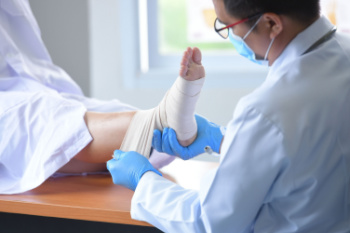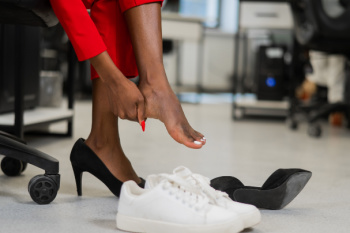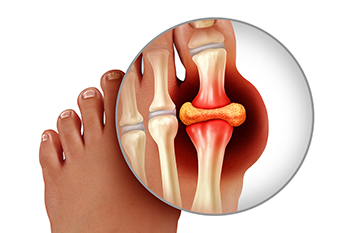

Yoga can significantly enhance circulation, promoting better blood flow and overall health. Specific poses, like the headstand, legs up the wall, and head-to-knee pose, are particularly beneficial. The headstand pose helps improve circulation by reversing the effects of gravity, encouraging blood flow to the upper body and brain. Legs up the wall pose aids in reducing swelling and fatigue by allowing blood to flow back toward the heart, which is especially helpful for those who spend long periods sitting or standing. The head-to-knee pose stretches the hamstrings and stimulates blood flow to the lower extremities, improving flexibility and circulation. Regular practice of these poses can help alleviate symptoms of poor circulation, such as swelling and cold feet, by enhancing blood flow and promoting overall vascular health. If you have symptoms of poor circulation in your feet that can include tingling sensations or discoloration, it is suggested that you consult a podiatrist who can discuss specific yoga poses and other stretches for possible relief.
While poor circulation itself isn’t a condition; it is a symptom of another underlying health condition you may have. If you have any concerns with poor circulation in your feet contact Dr. Nooshin Zolfaghari of VIP Foot & Ankle Center. Our doctor will treat your foot and ankle needs.
Poor Circulation in the Feet
Peripheral artery disease (PAD) can potentially lead to poor circulation in the lower extremities. PAD is a condition that causes the blood vessels and arteries to narrow. In a linked condition called atherosclerosis, the arteries stiffen up due to a buildup of plaque in the arteries and blood vessels. These two conditions can cause a decrease in the amount of blood that flows to your extremities, therefore resulting in pain.
Symptoms
Some of the most common symptoms of poor circulation are:
Treatment for poor circulation often depends on the underlying condition that causes it. Methods for treatment may include insulin for diabetes, special exercise programs, surgery for varicose veins, or compression socks for swollen legs.
As always, see a podiatrist as he or she will assist in finding a regimen that suits you. A podiatrist can also prescribe you any needed medication.
If you have any questions, please feel free to contact our office located in Pembroke Pines, FL . We offer the newest diagnostic and treatment technologies for all your foot care needs.

Ankle injuries can range from minor sprains to severe fractures. Broken ankles, or fractures, typically involve one or more of the three bones that make up the ankle joint. Specifically, they are the tibia and fibula in the leg, and the talus in the foot. The most common types of ankle fractures are lateral malleolus fractures, which affect the fibula. Medial malleolus fractures affect the tibia and bimalleolar fractures involve both the leg bones. Fractures that result in joint instability, may require surgery to ensure proper healing and reduce the risk of long-term complications, like arthritis. Rarer types of ankle fractures, such as trimalleolar fractures, Maisonneuve, or spiral, fractures, and talus fractures present their own unique challenges and treatment approaches. Symptoms of a fractured ankle include pain to touch, swelling, bruising and an inability to bear weight. If you have sustained a broken ankle, it is suggested that you make an emergency appointment with a podiatrist for a diagnosis and the appropriate treatment recommendations.
Broken ankles need immediate treatment. If you are seeking treatment, contact Dr. Nooshin Zolfaghari from VIP Foot & Ankle Center. Our doctor can provide the care you need to keep you pain-free and on your feet.
Broken Ankles
A broken ankle is experienced when a person fractures their tibia or fibula in the lower leg and ankle area. Both of these bones are attached at the bottom of the leg and combine to form what we know to be our ankle.
When a physician is referring to a break of the ankle, he or she is usually referring to a break in the area where the tibia and fibula are joined to create our ankle joint. Ankles are more prone to fractures because the ankle is an area that suffers a lot of pressure and stress. There are some obvious signs when a person experiences a fractured ankle, and the following symptoms may be present.
Symptoms of a Fractured Ankle
If you suspect an ankle fracture, it is recommended to seek treatment as soon as possible. The sooner you have your podiatrist diagnose the fracture, the quicker you’ll be on the way towards recovery.
If you have any questions, please feel free to contact our office located in Pembroke Pines, FL . We offer the newest diagnostic and treatment technologies for all your foot care needs.
 Heel pain can stem from various conditions. Plantar fasciitis, the inflammation of the thick band of tissue running along the bottom of the foot, often causes stabbing pain near the heel. Bursitis, an inflammation of the fluid-filled sacs cushioning the heel, can result from repetitive stress. Heel spurs, bony growths on the underside of the heel bone, may develop due to long-term strain on foot muscles and ligaments. A pump bump, or Haglund's deformity, is a bony enlargement on the back of the heel caused by pressure from footwear. Achilles tendonitis is inflammation of the Achilles tendon, typically due to overuse or tight calf muscles. Diagnosing heel pain involves having a physical exam, reviewing medical history, and sometimes undergoing imaging tests, such as X-rays or MRI scans. Treatment options include rest, stretching exercises, orthotics, and anti-inflammatory medications. If you have persistent heel pain, it is suggested that you schedule an appointment with a podiatrist for a proper diagnosis and treatment plan.
Heel pain can stem from various conditions. Plantar fasciitis, the inflammation of the thick band of tissue running along the bottom of the foot, often causes stabbing pain near the heel. Bursitis, an inflammation of the fluid-filled sacs cushioning the heel, can result from repetitive stress. Heel spurs, bony growths on the underside of the heel bone, may develop due to long-term strain on foot muscles and ligaments. A pump bump, or Haglund's deformity, is a bony enlargement on the back of the heel caused by pressure from footwear. Achilles tendonitis is inflammation of the Achilles tendon, typically due to overuse or tight calf muscles. Diagnosing heel pain involves having a physical exam, reviewing medical history, and sometimes undergoing imaging tests, such as X-rays or MRI scans. Treatment options include rest, stretching exercises, orthotics, and anti-inflammatory medications. If you have persistent heel pain, it is suggested that you schedule an appointment with a podiatrist for a proper diagnosis and treatment plan.
Many people suffer from bouts of heel pain. For more information, contact Dr. Nooshin Zolfaghari of VIP Foot & Ankle Center. Our doctor can provide the care you need to keep you pain-free and on your feet.
Causes of Heel Pain
Heel pain is often associated with plantar fasciitis. The plantar fascia is a band of tissues that extends along the bottom of the foot. A rip or tear in this ligament can cause inflammation of the tissue.
Achilles tendonitis is another cause of heel pain. Inflammation of the Achilles tendon will cause pain from fractures and muscle tearing. Lack of flexibility is also another symptom.
Heel spurs are another cause of pain. When the tissues of the plantar fascia undergo a great deal of stress, it can lead to ligament separation from the heel bone, causing heel spurs.
Why Might Heel Pain Occur?
Treatments
Heel pain should be treated as soon as possible for immediate results. Keeping your feet in a stress-free environment will help. If you suffer from Achilles tendonitis or plantar fasciitis, applying ice will reduce the swelling. Stretching before an exercise like running will help the muscles. Using all these tips will help make heel pain a condition of the past.
If you have any questions please contact our office located in Pembroke Pines, FL . We offer the newest diagnostic and treatment technologies for all your foot and ankle needs.

Gout, once considered primarily an adult ailment, is increasingly being diagnosed in children, sparking concerns about its causes and implications. Hyperuricemia, characterized by elevated levels of uric acid in the blood, serves as a primary culprit behind the development of gout in young people. Excess uric acid can crystallize and accumulate in the joints, generally in the big toe, triggering inflammatory responses that manifest as painful gout attacks. In children, hyperuricemia can arise from various factors, including genetic predisposition and dietary habits rich in purine-containing foods like red meat, seafood, and sugary beverages. Additionally, obesity and certain medical conditions, such as metabolic syndrome or kidney disease, may contribute to the onset of gout. Moreover, sedentary behavior and inadequate hydration may increase the risk. Understanding the association between hyperuricemia and gout in children underscores the importance of early detection. If you notice your child has pain in the big toe, making it difficult to walk, gout may be a factor. It is suggested that you consult a podiatrist who can effectively diagnose and manage gout and offer treatment.
Gout is a painful condition that can be treated. If you are seeking treatment, contact Dr. Nooshin Zolfaghari from VIP Foot & Ankle Center. Our doctor will treat your foot and ankle needs.
What Is Gout?
Gout is a form of arthritis that is characterized by sudden, severe attacks of pain, redness, and tenderness in the joints. The condition usually affects the joint at the base of the big toe. A gout attack can occur at any random time, such as the middle of the night while you are asleep.
Symptoms
Risk Factors
Prior to visiting your podiatrist to receive treatment for gout, there are a few things you should do beforehand. If you have gout you should write down your symptoms--including when they started and how often you experience them, important medical information you may have, and any questions you may have. Writing down these three things will help your podiatrist in assessing your specific situation so that he or she may provide the best route of treatment for you.
If you have any questions, please feel free to contact our office located in Pembroke Pines, FL . We offer the newest diagnostic and treatment technologies for all your foot care needs.